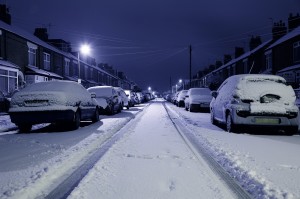Driving in snowy and freezing conditions is much more dangerous than in the heat of summer. But you can stave off most of the trouble if you prepare thoroughly.
Before the winter season
- When the temperature regularly dips below 4 degrees Celsius, it’s time to install winter tyres. Don’t be skimpy on this – the potential damage clearly exceeds the cost of a set of tyres.
- Test your brakes.
- Replace the motor oil with winter oil for an easier engine start.
- Add antifreeze to the coolant in order to protect your car from corrosion and freezing.
- Use cold-resistant winter windscreen washer fluid.
- Check the battery and replace it if it is weak.
- Test the heating system, including the cabin heating as well as any rear window and mirror heating.
- It’s obligatory to keep a light-reflecting safety vest and a reflective emergency triangle in your car. Besides these, it’s advisable to have a starting cable, an ice scraper, a shovel, sand or snow, and snow chain in the car.
- Don’t forget your passengers: they may need blankets, flashlights, candles, matches or lighters and, in extreme cases, food, cooking utensils or medicine.

Before winter driving
- Clean all windows for a clear all-round view.
- Check the windscreen spray nozzle for blockage by frost or dirt. Make sure that you have enough windscreen washer fluid, and test the windscreen wipers.
- Clean the external mirrors if necessary.
- Check the front and rear lights and remove any snow or ice from them.
- Make sure that your license plate is visible.
On the road
- Drive carefully, slower than usual.
- Keep a greater distance from the vehicle ahead.
- Think ahead. Allow yourself time and space to react to any unexpected event.
- Go easy on the brake and accelerator pedals.
- Avoid sudden steering wheel movements.
- Be careful around bridges and overpasses – their surface freezes over easily.
- If your car slides straight ahead instead of turning, take your foot off the accelerator and adjust the course of the car.
- If the car over-steers, accelerate gently and counter-steer (steer in the direction of the slide).
- If your car gets stuck in the snow, don’t spin the wheels unnecessarily. Remove the snow from the area around the wheels, and rock the car back and forth.
Upon arrival
- Flush the car to remove mud, salt and chemicals.

